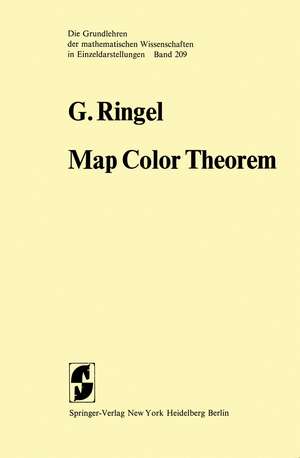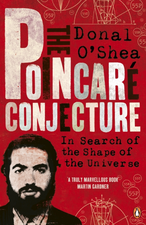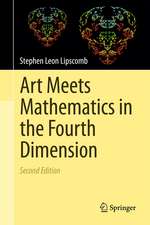Map Color Theorem: Grundlehren der mathematischen Wissenschaften, cartea 209
Autor G. Ringelen Limba Engleză Paperback – 7 dec 2011
Din seria Grundlehren der mathematischen Wissenschaften
-
 Preț: 353.84 lei
Preț: 353.84 lei - 24%
 Preț: 728.15 lei
Preț: 728.15 lei -
 Preț: 410.21 lei
Preț: 410.21 lei - 24%
 Preț: 587.87 lei
Preț: 587.87 lei - 17%
 Preț: 498.73 lei
Preț: 498.73 lei -
 Preț: 592.75 lei
Preț: 592.75 lei - 20%
 Preț: 692.49 lei
Preț: 692.49 lei - 24%
 Preț: 893.28 lei
Preț: 893.28 lei - 20%
 Preț: 824.73 lei
Preț: 824.73 lei - 24%
 Preț: 632.96 lei
Preț: 632.96 lei - 15%
 Preț: 596.69 lei
Preț: 596.69 lei - 15%
 Preț: 714.49 lei
Preț: 714.49 lei -
 Preț: 333.01 lei
Preț: 333.01 lei - 15%
 Preț: 473.16 lei
Preț: 473.16 lei -
 Preț: 356.49 lei
Preț: 356.49 lei -
 Preț: 484.43 lei
Preț: 484.43 lei - 15%
 Preț: 452.79 lei
Preț: 452.79 lei -
 Preț: 456.66 lei
Preț: 456.66 lei - 15%
 Preț: 708.75 lei
Preț: 708.75 lei -
 Preț: 423.08 lei
Preț: 423.08 lei - 15%
 Preț: 444.29 lei
Preț: 444.29 lei - 15%
 Preț: 527.79 lei
Preț: 527.79 lei - 15%
 Preț: 589.65 lei
Preț: 589.65 lei -
 Preț: 353.40 lei
Preț: 353.40 lei - 18%
 Preț: 727.66 lei
Preț: 727.66 lei -
 Preț: 387.96 lei
Preț: 387.96 lei - 15%
 Preț: 454.74 lei
Preț: 454.74 lei - 15%
 Preț: 481.03 lei
Preț: 481.03 lei -
 Preț: 464.55 lei
Preț: 464.55 lei -
 Preț: 348.77 lei
Preț: 348.77 lei -
 Preț: 362.04 lei
Preț: 362.04 lei -
 Preț: 488.12 lei
Preț: 488.12 lei - 15%
 Preț: 447.57 lei
Preț: 447.57 lei -
 Preț: 419.81 lei
Preț: 419.81 lei -
 Preț: 388.52 lei
Preț: 388.52 lei -
 Preț: 419.21 lei
Preț: 419.21 lei - 15%
 Preț: 581.01 lei
Preț: 581.01 lei -
 Preț: 497.75 lei
Preț: 497.75 lei -
 Preț: 360.53 lei
Preț: 360.53 lei -
 Preț: 387.75 lei
Preț: 387.75 lei -
 Preț: 419.81 lei
Preț: 419.81 lei - 18%
 Preț: 725.75 lei
Preț: 725.75 lei -
 Preț: 453.78 lei
Preț: 453.78 lei -
 Preț: 386.39 lei
Preț: 386.39 lei
Preț: 579.34 lei
Preț vechi: 681.58 lei
-15% Nou
Puncte Express: 869
Preț estimativ în valută:
110.87€ • 115.05$ • 92.67£
110.87€ • 115.05$ • 92.67£
Carte tipărită la comandă
Livrare economică 15-29 martie
Preluare comenzi: 021 569.72.76
Specificații
ISBN-13: 9783642657610
ISBN-10: 3642657613
Pagini: 212
Ilustrații: XII, 194 p.
Dimensiuni: 152 x 229 x 11 mm
Greutate: 0.29 kg
Ediția:Softcover reprint of the original 1st ed. 1974
Editura: Springer Berlin, Heidelberg
Colecția Springer
Seria Grundlehren der mathematischen Wissenschaften
Locul publicării:Berlin, Heidelberg, Germany
ISBN-10: 3642657613
Pagini: 212
Ilustrații: XII, 194 p.
Dimensiuni: 152 x 229 x 11 mm
Greutate: 0.29 kg
Ediția:Softcover reprint of the original 1st ed. 1974
Editura: Springer Berlin, Heidelberg
Colecția Springer
Seria Grundlehren der mathematischen Wissenschaften
Locul publicării:Berlin, Heidelberg, Germany
Public țintă
ResearchCuprins
1. Problems, Illustrations, History.- 1.1.The Four Color Problem.- 1.2. Map Color Theorem.- 1.3. The Thread Problem.- 1.4. Unilateral Surfaces.- 2. Graph Theory.- 2.1. Chromatic Number.- 2.2. Rotations of Graphs.- 2.3. Orientable Cases 7 and 10.- 3. Classification of Surfaces.- 3.1. The Concept of Topology.- 3.2. Polyhedra.- 3.3. Elementary Operations.- 3.4. Normal Form for Orientable Surfaces.- 3.5. Normal Form for Non-Orientable Surfaces.- 3.6. Standard Models.- 3.7. Partial Polyhedra.- 4. Graphs on Surfaces.- 4.1. Embedding Theorem.- 4.2. Dual Polyhedra.- 4.3. Heawood’s Inequality.- 4.4. Genus of Graphs.- 4.5. Non-Orientable Genus of Graphs.- 4.6. Klein’s Bottle.- 5. Combinatorics of Embeddings.- 5.1. Triangular Embeddings.- 5.2. Orientable Special Cases.- 5.3. Outline for General Cases.- 6. Orientable Cases 1, 4, and 9.- 6.1. Orientable Case 4.- 6.2. Arithmetic Combs.- 6.3. Orientable Case 1.- 6.4. Coil Diagrams.- 6.5. Orientable Case 9.- 7. Orientable Cases 11, 2, and 8.- 7.1. Example for n=35.- 7.2. Orientable Case 11.- 7.3. The Additional Adjacency Problem.- 7.4. Orientable Case 2.- 7.5. Additional Adjacency Problem.- 7.6. Orientable Case 8.- 8. Non-Orientable Cases (Index 1).- 8.1. Method of Doubling.- 8.2. Non-Orientable Cases 0, 3, 7.- 8.3. Cascades.- 8.4. Orientable Application.- 9. Solutions of Index 2 and 3.- 9.1. Examples and Method.- 9.2. Orientable Cases 3 and 5.- 9.3. Orientable Case 6.- 9.4. Non-Orientable Case 9.- 10. Construction by Induction.- 10.1. An Index 3 Induction.- 10.2. An Index 2 Induction.- 10.3. Non-Orientable Cases 1, 2, 6, and 10.- 11. Orientable Case 0.- 11.1. Currents from Non-Abelian Groups.- 11.2. Examples.- 11.3. General Solution.- 12. Related Problems.- 12.1. Questions about Rotations.- 12.2. Questions about Embeddings.-References.













